
The Different Types of Men’s Tie Knots: Master the Art of the Perfect Knot
This publication is also available in: Français
Deutsch
Italiano
Español
English (US)
The tie knot is an essential element of men’s style. Every man should master this art to display elegance and refinement on all occasions. We will introduce you to the different types of knots suitable for long and short ties, in silk or other materials. We will explain how to make these knots simply and effectively, so you can express your personality and adapt to each occasion, whether it is a formal or casual event. In addition, we will discuss the way to choose the ideal tie based on your body shape and the occasion.
How to Tie Your Long Tie?
1. The Simple Knot (Four-in-Hand):
This basic and widespread knot is suitable for almost all occasions and styles. It is easy to achieve and is suitable for classic shirt collars and silk ties. To make it, start by crossing the wide part of the tie over the narrow part, then wrap it around before passing it through the loop formed.
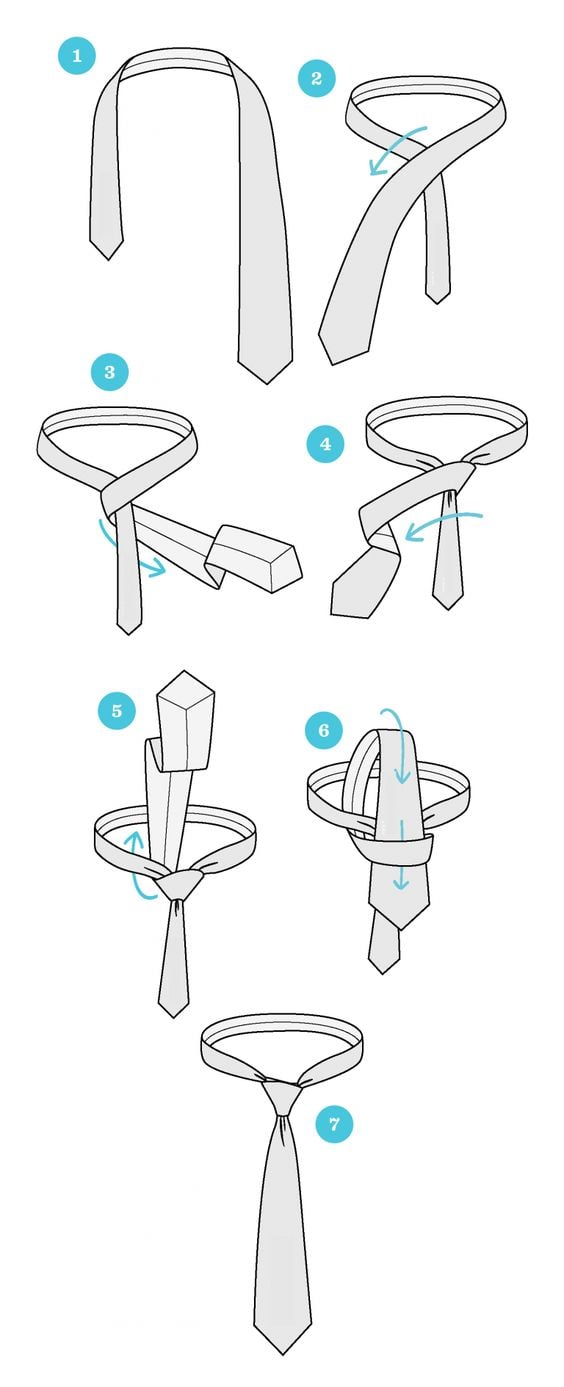
Source: Pinterest
2. The Windsor Knot:
A symbol of elegance and refinement, the Windsor knot is more voluminous than the simple knot and is perfect for wide and spread collars. Ideal for formal events and grand occasions, it requires a bit more practice to be perfectly executed. To make it, start by crossing the two ends of the tie, then pass the wide part around the collar before sliding it into the loop formed.
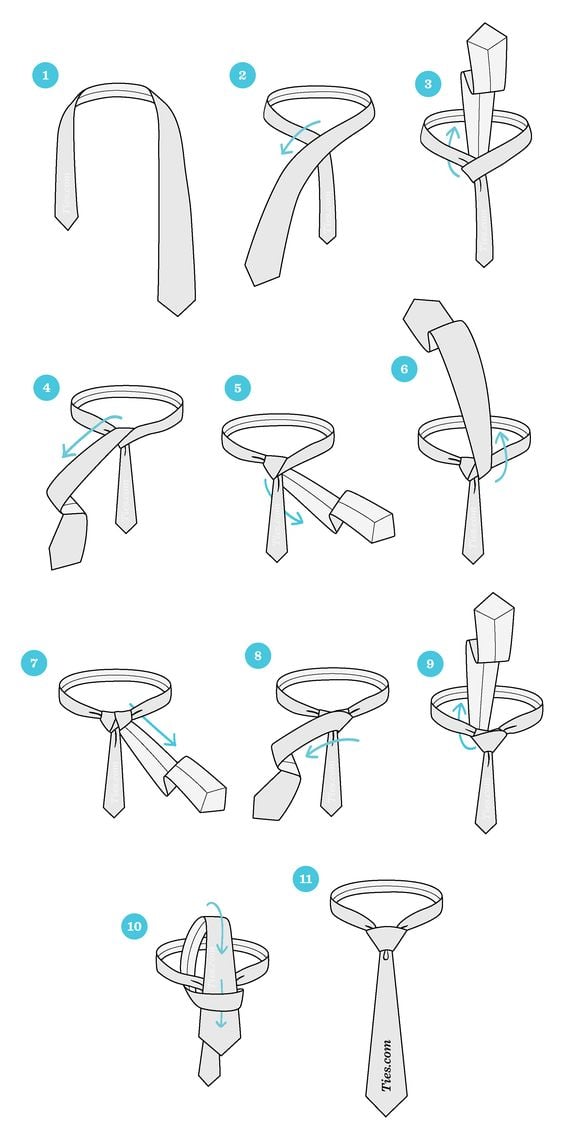
Source: Pinterest
3. The Half-Windsor:
Smaller than the Windsor, this elegant knot suits moderately spread collars and is suitable for formal and semi-formal occasions. It is also easy to achieve, following the same steps as for the Windsor knot, but only making one turn around the collar.
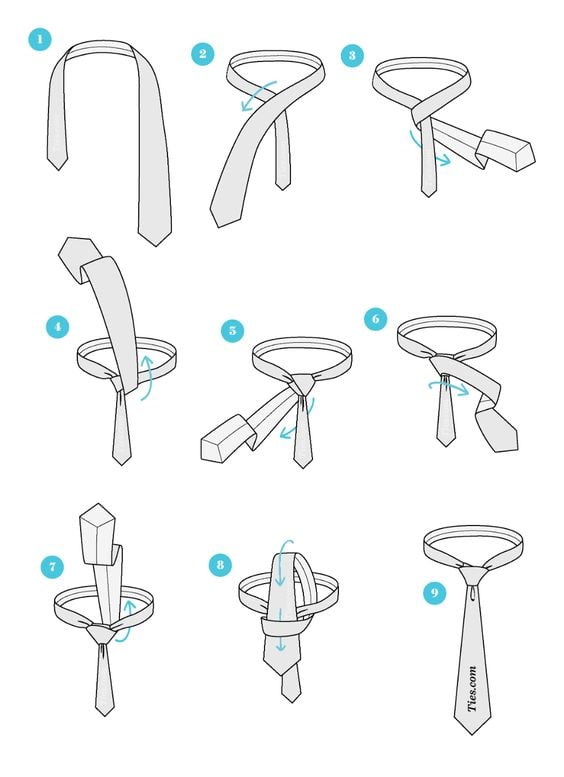
4. The Pratt Knot (or Shelby):
This symmetrical and moderately voluminous knot is very versatile and can be worn with both classic and spread collars. It is suitable for formal and casual occasions and is made by starting with the tie inside out, crossing the two ends, and passing the wide part around the collar before sliding it into the loop formed.
To learn more, discover how to wear a tie for men.

Source: Pinterest
How to Tie Your Short Tie?
5. The Double Simple Knot (Double Four-in-Hand):
This variation of the simple knot with an extra loop is ideal for short and thick ties and adds a touch of originality to your outfit. To make it, follow the same steps as for the simple knot, but wrap the wide part twice around the narrow part before passing it through the loop formed.

Source: Pinterest
6. The Oriental Knot:
This very simple and low-volume knot is ideal for short and thin ties and is suitable for informal and casual occasions. To make it, simply cross the narrow part of the tie over the wide part, then wrap the wide part around the narrow part before passing it through the loop formed.
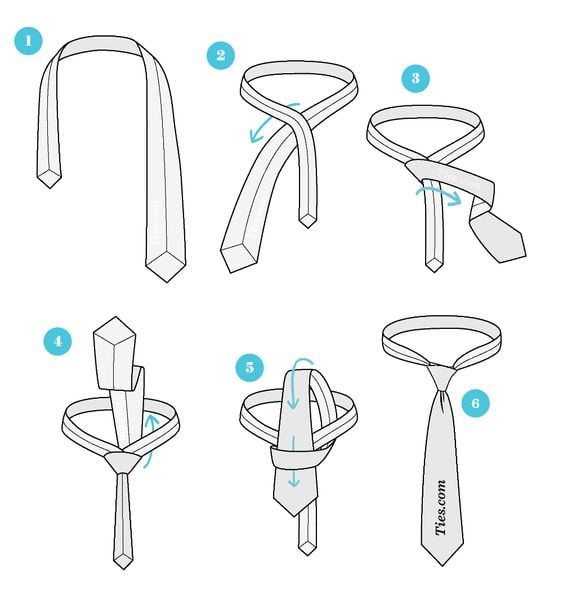
Source: Pinterest
7. The Eldredge Knot:
This complex and spectacular knot draws attention and requires a short and thin tie. It is perfect for formal events where you wish to stand out. To make it, start by passing the narrow part of the tie over the wide part, then wrap it several times around forming a spiral before passing it through the loop formed.
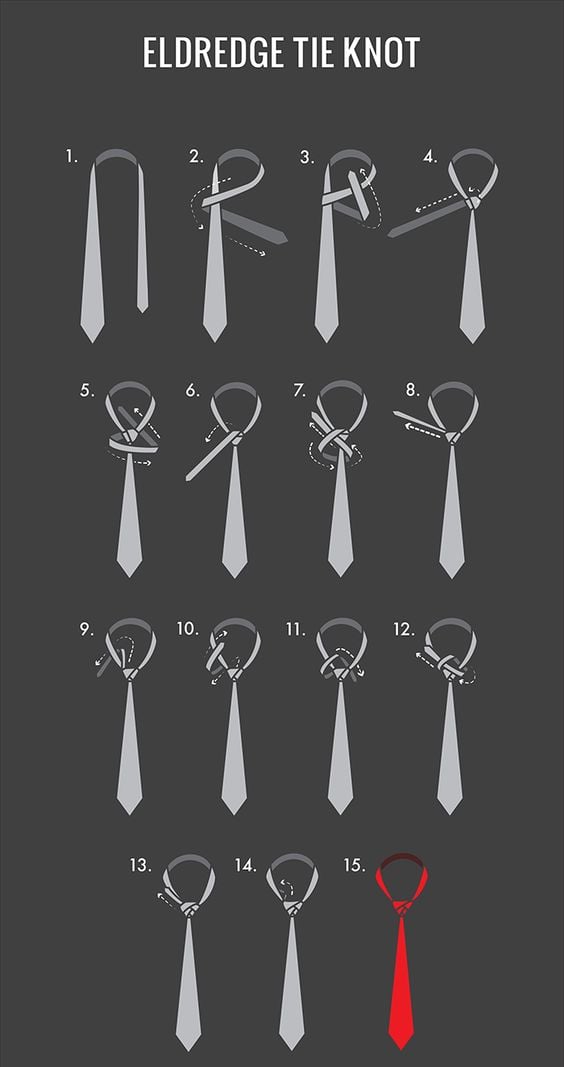
Source: Pinterest
8. The Trinity Knot:
This elegant and original knot, composed of three distinct parts, is ideal for short ties and suitable for formal and semi-formal occasions. To make it, start by passing the narrow part of the tie over the wide part, then wrap it around forming three distinct loops before passing it through the loop formed.

Source: Pinterest
How to Choose the Right Tie Length?
The length of the tie is important for an aesthetic result and a successful knot:
- Standard ties usually measure between 137 and 150 cm in length,
- while ties for taller or larger men can measure up to 165 cm.
To determine the ideal length for you, consider the position of the tie’s tip once tied: it should ideally reach the waistband of your pants.
Which Materials and Colors to Choose for Your Tie?
Ties come in various materials, such as silk, cotton, linen, or wool, and the choice of material will depend on the season and the occasion.
Silk ties are highly appreciated for their elegance and natural shine, and are particularly suitable for formal events.
Cotton ties, linen, or wool ties are more suitable for casual occasions or cooler seasons.
Colors and patterns also play an essential role in the choice of the tie. For a classic and timeless look, opt for sober colors like black, gray, or navy blue. Patterns, such as stripes, polka dots, or geometric designs, can add a touch of whimsy and originality to your outfit, as long as they harmonize with the rest of your outfit.
To learn more, discover our guide to choosing the material of your tie for men.
Tips for Tying and Maintaining Your Tie:
- Take your time to make the knot, ensuring that the tie is well adjusted and without wrinkles.
- When undoing your knot, proceed carefully to avoid damaging the tie.
- Store your ties flat or rolled to avoid creases and marks.
- Clean your ties following the care instructions provided on the label, usually dry cleaning for silk ties and hand washing for cotton or linen ties.
- When pairing a tie with your outfit, consider the harmony of colors and patterns with your shirt and suit. For example, avoid mixing patterns that are too similar or too different.
Mastering the art of tying a tie is essential to display elegance and refinement on all occasions. Whether you opt for a simple knot, Windsor, half-Windsor, Pratt, double simple, oriental, Eldredge, or Trinity, you now have all the necessary information to make the perfect knot and choose the tie suited to your body shape and the occasion. Do not hesitate to experiment and vary the knots according to your style and desires, for a look that is always impeccable and unique.



